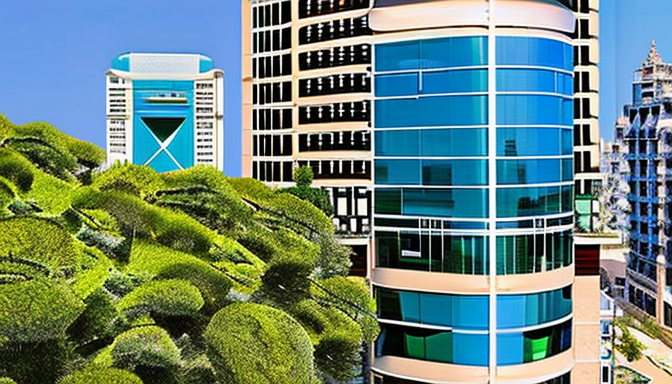Karachi is a city that surprises you at every turn. It’s not just a bustling metropolis; it’s a treasure trove of architectural gems. Many of these buildings whisper stories of the past. Have you ever wandered through the narrow streets and stumbled upon a stunning mosque or a grand colonial structure? Each one tells a tale, a piece of Karachi’s rich history.
Take, for instance, the magnificent Frere Hall. Built in the 1860s, this beautiful building showcases Gothic Revival architecture. Its lush gardens and intricate design make it a favorite spot for both locals and tourists. Or consider the Mohatta Palace, a stunning example of Indo-Saracenic architecture. Once a summer retreat for a wealthy businessman, it now serves as a museum, preserving the city’s heritage. These buildings are not just structures; they are landmarks of identity.
And let’s not forget the historic mosques scattered throughout the city. The Masjid-e-Tooba, known for its impressive dome, is a marvel of modern architecture. It stands as a testament to Karachi’s evolving skyline. Each mosque, with its unique design, reflects the city’s diverse cultural tapestry.
In essence, Karachi’s architectural landscape is a blend of old and new. It’s a canvas painted with the colors of history, culture, and innovation. So next time you walk through this vibrant city, keep your eyes peeled. You never know what hidden gems you might discover!
The Historical Significance of Karachi’s Architecture
Karachi is a city where every corner whispers stories of the past. Its architecture is not just about buildings; it’s a reflection of its diverse culture. From colonial structures to stunning mosques, Karachi’s skyline is a tapestry woven with threads of history. Each building tells a tale, revealing the influences of different eras and cultures.
Take a stroll through the streets, and you’ll find historic gems that have stood the test of time. For instance, the majestic Frere Hall, built in the 1860s, showcases Gothic Revival architecture. It was originally a town hall and now serves as a library and exhibition space. Imagine the gatherings that once took place there!
Then there are the beautiful mosques, like the iconic Masjid-e-Tooba. This mosque is famous for its stunning dome, which is one of the largest in the world. It’s a perfect example of how architecture can inspire spirituality. Every detail, from the intricate tile work to the serene surroundings, speaks to the city’s rich Islamic heritage.
Furthermore, monuments like the Mazar-e-Quaid remind us of the nation’s struggle for independence. This mausoleum is not just a resting place for Muhammad Ali Jinnah; it represents the hopes and dreams of a young nation. As you explore these sites, you can’t help but feel a connection to the past.
In summary, Karachi’s architecture is a living history. It encapsulates the essence of a city that has evolved yet remains deeply rooted in its traditions. So, next time you wander through Karachi, take a moment to appreciate the stories that its buildings have to tell.

Modern Architectural Innovations in Karachi
Karachi is not just a city; it’s a canvas of innovation and creativity. The skyline tells a story of how the past meets the present. While the historical buildings whisper tales of yesteryears, the modern structures shout out the city’s ambition. Have you ever looked up and thought about the stories behind those glass towers?
Take, for example, the stunning One Constitution Avenue. This architectural masterpiece stands tall, showcasing a blend of sleek lines and sustainable design. It’s not just about looking good; it’s about being smart. The use of eco-friendly materials makes it a beacon of modernity in a city that’s constantly evolving.
Another gem is the National Museum of Pakistan, which has recently undergone renovations. The modern touches enhance its historical significance. It’s like putting a new dress on a classic. The museum now not only houses artifacts but also serves as a cultural hub, inviting everyone to explore the rich tapestry of Pakistan’s history.
Moreover, the Karachi Waterfront Development Project is a game-changer. Imagine a vibrant waterfront with parks, cafes, and walking paths. It’s a place where families can gather, and friends can meet. The project aims to connect people with nature, creating a balance between urban life and the environment.
In Karachi, modern architecture is more than just buildings; it’s about creating spaces that foster community and inspire creativity. Each structure adds a unique flavor to the city’s identity, making it a place where tradition and innovation coexist. Isn’t that a beautiful thought?
Frequently Asked Questions
- What are some hidden architectural gems in Karachi?
Karachi is home to numerous architectural wonders, including the stunning Mohatta Palace, the elegant Frere Hall, and the historic Empress Market. Each of these sites tells a unique story about the city’s rich heritage and cultural evolution.
- How has Karachi’s architecture evolved over time?
The architecture of Karachi has transformed significantly due to various cultural influences and historical events. From colonial-era buildings to modern skyscrapers, each style reflects the city’s dynamic history and its blend of traditions.
- Are there any modern architectural innovations in Karachi?
Absolutely! Karachi boasts several contemporary architectural projects that showcase innovative designs, such as the iconic Bahria Icon Tower and the sleek MCB Tower. These structures not only enhance the skyline but also represent the city’s ongoing modernization.
- Why is it important to preserve Karachi’s architectural heritage?
Preserving Karachi’s architectural heritage is crucial as it maintains the city’s identity and educates future generations about its rich history. These buildings serve as reminders of the diverse cultures that have shaped the city over the years.